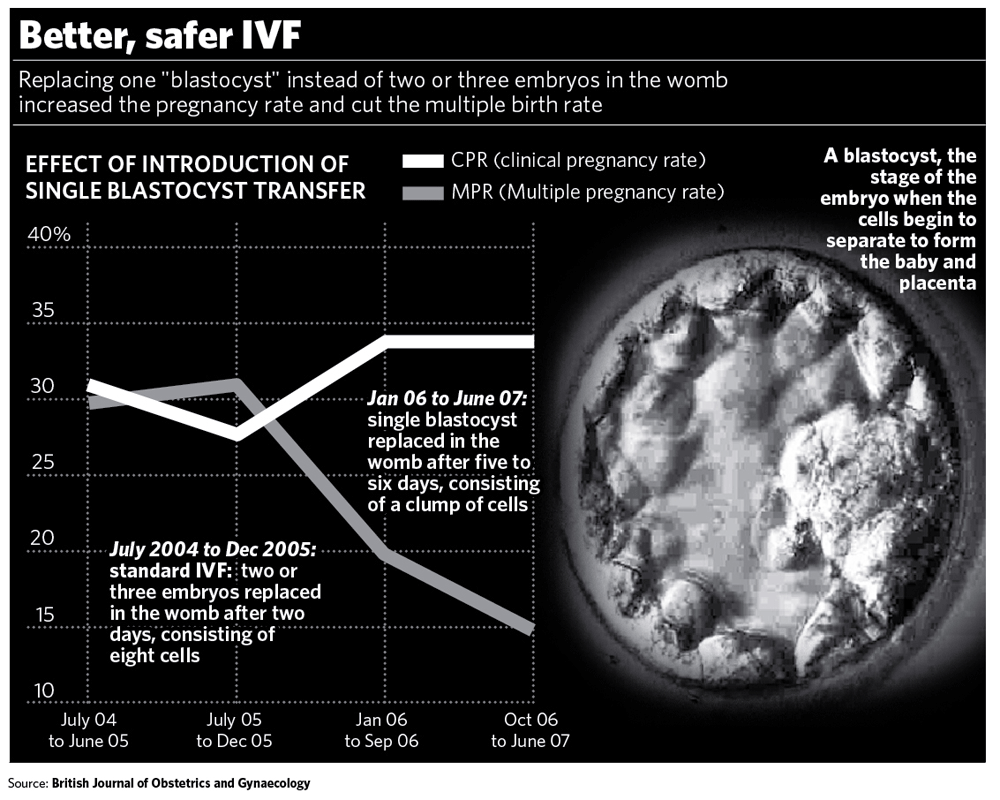New IVF technique: greater success rate, fewer multiple births

Your support helps us to tell the story
From reproductive rights to climate change to Big Tech, The Independent is on the ground when the story is developing. Whether it's investigating the financials of Elon Musk's pro-Trump PAC or producing our latest documentary, 'The A Word', which shines a light on the American women fighting for reproductive rights, we know how important it is to parse out the facts from the messaging.
At such a critical moment in US history, we need reporters on the ground. Your donation allows us to keep sending journalists to speak to both sides of the story.
The Independent is trusted by Americans across the entire political spectrum. And unlike many other quality news outlets, we choose not to lock Americans out of our reporting and analysis with paywalls. We believe quality journalism should be available to everyone, paid for by those who can afford it.
Your support makes all the difference.Doctors have found a way to boost the success rate of IVF in a ground-breaking study that halved the incidence of multiple births, by far the biggest hazard of fertility treatment.
Fertility specialists at Guy's and St Thomas' Hospital who tested the new technique say they hope it will be adopted as a standard approach by IVF clinics that are striving to reduce the burden of twin and triplet births.
The technique involves growing the fertilised embryos for a couple of extra days in the laboratory and identifying the best single "blastocyst" – as the embryos are then known – to increase the chances of success.
Using the technique, the Guy's and St Thomas' specialists transferred one blastocyst to the womb, instead of the usual two or three, yet increased the pregnancy rate from 27 per cent to 32 per cent. At the same time, they cut the incidence of twins and triplets from 30 per cent to 17 per cent (some multiple births still occur because a single embryo can split to form identical twins). In all, 2,451 IVF cycles were performed comparing the two approaches between 2004 and 2007.
Yakoub Khalaf, who led the study published in the British Journal of Obstetrics and Gynaecology (BJOG), said: "It is a myth that single embryo transfer lowers the success rate for pregnancy. If the right patients are selected for blastocyst transfer, success rates can be maintained and multiple pregnancy can be reduced."
About 90 per cent of IVF cycles in Britain currently use two embryos because clinics and couples fear that using only one will reduce the pregnancy rates. Many couples see twins as a way to an instant family without recognising the dangers, specialists say.
Twin births have risen from 6,000 a year in 1975 to 10,000 a year today, driven by IVF. But they carry increased risks of premature birth, intra-uterine growth retardation and pre-eclampsia. The chances of complications in the mother increase sixfold and the risk of death of the babies in the first month sevenfold.
The Human Fertilisation and Embryology Authority has told clinics to cut IVF twin and triplet births from one in four to one in 10 by choosing couples with the best chance of pregnancy – often the youngest – for single embryo transfer. Even so, many couples insist on using at least two embryos because they want to maximise their chances. Dr Khalaf said half of the parents in his study refused to accept a single embryo when they heard their chances would be better with two. "But this is not just about success. The risks of multiple pregnancy are substantial. I would encourage every IVF clinic to look at our results," he said.
"We are very mindful of parents' desire for a family and the cost of private treatment and that under the NHS they only have one shot. If despite our best efforts to advise parents they choose to have two blastocysts replaced, that is their choice."
Professor Philip Steer, editor of the BJOG, said: "The results of this study suggest that single embryo transfer can be the way forward for many women undergoing IVF. It is important that IVF units develop the skills to ensure that only the best blastocysts are used and women should be better educated about the high risks of multiple pregnancy."
Join our commenting forum
Join thought-provoking conversations, follow other Independent readers and see their replies
Comments